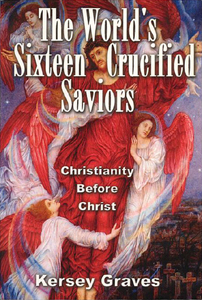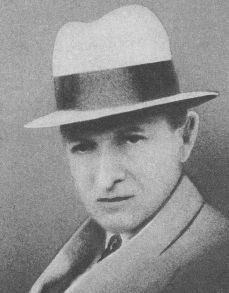
Mormonism is the religious tradition and theology of the Latter Day Saint movement of Restorationist Christianity started by Joseph Smith in Western New York in the 1820s and 1830s. As a label, Mormonism has been applied to various aspects of the Latter Day Saint movement, although there has been a recent push from the Church of Jesus Christ of Latter-day Saints to distance themselves from this label. A historian, Sydney E. Ahlstrom, wrote in 1982, "One cannot even be sure, whether [Mormonism] is a sect, a mystery cult, a new religion, a church, a people, a nation, or an American subculture; indeed, at different times and places it is all of these."
The Book of Ether is one of the books of the Book of Mormon. It describes the Jaredites, descendants of Jared and his companions, who were led by God to the Americas shortly after the confusion of tongues and the destruction of the Tower of Babel. Ether consists of fifteen chapters.

Thor Heyerdahl KStJ was a Norwegian adventurer and ethnographer with a background in biology with specialization in zoology, botany and geography.
Viracocha is the great creator deity in the pre-Inca and Inca mythology in the Andes region of South America. According to the myth Viracocha had human appearance and was generally considered as bearded. According to the myth he ordered the construction of Tiwanaku. It is also said that he was accompanied by men also referred to as Viracochas.

Pre-Columbian transoceanic contact theories are speculative theories which propose that possible visits to the Americas, possible interactions with the Indigenous peoples of the Americas—or both—were made by people from Africa, Asia, Europe, or Oceania prior to Christopher Columbus's first voyage to the Caribbean in 1492. Studies between 2004 and 2009 suggest the possibility that the earliest human migrations to the Americas may have been made by boat from Beringia and travel down the Pacific coast, contemporary with and possibly predating land migrations over the Beringia land bridge, which during the glacial period joined what today are Siberia and Alaska. Whether transoceanic travel occurred during the historic period, resulting in pre-Columbian contact between the settled American peoples and voyagers from other continents, is vigorously debated.

Ancient astronauts refer to a pseudoscientific set of beliefs which holds that intelligent extraterrestrial beings visited Earth and made contact with humans in antiquity and prehistoric times. Proponents suggest that this contact influenced the development of modern cultures, technologies, religions, and human biology. A common position is that deities from most, if not all, religions are extraterrestrial in origin, and that advanced technologies brought to Earth by ancient astronauts were interpreted as evidence of divine status by early humans.

The Book of Abraham is a collection of writings claimed to be from several Egyptian scrolls discovered in the early 19th century during an archeological expedition by Antonio Lebolo. Members of the Church of Jesus Christ of Latter-day Saints purchased the scrolls from a traveling mummy exhibition on July 3, 1835, to be translated into English by Joseph Smith. According to Smith, the book was "a translation of some ancient records... purporting to be the writings of Abraham, while he was in Egypt, called the Book of Abraham, written by his own hand, upon papyrus". Smith said the papyri described Abraham's early life, his travels to Canaan and Egypt, and his vision of the cosmos and its creation.
In orthodox Mormonism, the term God generally refers to the biblical God the Father, whom Latter Day Saints also refer to as Elohim or Heavenly Father, and the term Godhead refers to a council of three distinct divine persons consisting of God the Father, Jesus Christ, and the Holy Ghost. However, in Latter Day Saint theology the term God may also refer to, in some contexts, the Godhead as a whole or to each member individually. Latter Day Saints believe that the Father, Son, and Holy Ghost are three distinct beings, and that the Father and Jesus have perfected, glorified, physical bodies, while the Holy Ghost is a spirit without a physical body. Latter Day Saints also believe that there are other gods and goddesses outside the Godhead, such as a Heavenly Mother—who is the wife of God the Father—and that faithful Latter-day Saints may attain godhood in the afterlife. The term Heavenly Parents is used to refer collectively to the divine partnership of Heavenly Father and a Heavenly Mother. Joseph Smith taught that God was once a man on another planet before being exalted to Godhood.

Apotheosis, also called divinization or deification, is the glorification of a subject to divine levels and, commonly, the treatment of a human being, any other living thing, or an abstract idea in the likeness of a deity.
James Harting Madole was a prominent fascist and leader of the National Renaissance Party in the United States. He is now recognized as a pivotal figure in the development of post-war occult-fascism.

The World's Sixteen Crucified Saviors; Or, Christianity Before Christ, Containing New, Startling, and Extraordinary Revelations in Religious History, which Disclose the Oriental Origin of All the Doctrines, Principles, Precepts, and Miracles of the Christian New Testament, and Furnishing a Key for Unlocking Many of Its Sacred Mysteries, Besides Comprising the History of 16 Heathen Crucified Gods is an 1875 book written by American freethinker Kersey Graves, which asserts that Jesus was not an actual person, but was a creation largely based on earlier stories of deities or god-men saviours who had been crucified and descended to and ascended from the underworld. Parts were reprinted in The Book Your Church Doesn't Want You to Read edited by Tim C. Leedom in 1994, and it was republished in its entirety in 2001.

Mayanism is a non-codified eclectic collection of New Age beliefs, influenced in part by Pre-Columbian Maya mythology and some folk beliefs of the modern Maya peoples.

Fingerprints of the Gods: The Evidence of Earth's Lost Civilization is a 1995 pseudoarcheology book by British writer Graham Hancock, which contends that an advanced civilization existed in prehistory, one which served as the common progenitor civilization to all subsequent known ancient historical ones. The author proposes that sometime around the end of the last ice age this civilization ended in cataclysm, but passed on to its inheritors profound knowledge of such things as astronomy, architecture and mathematics.

Harold Tom Wilkins was a British journalist known for his books on treasure hunting and pseudohistoric claims about Atlantis and South America.

Studies of the Book of Mormon is a collection of essays written at the beginning of the 20th century by B. H. Roberts (1857–1933), a general authority of the Church of Jesus Christ of Latter-day Saints, which examine the validity of the Book of Mormon as a translation of an ancient American source.

Esoteric Nazism, also known as Esoteric Fascism or Esoteric Hitlerism, refers to a range of mystical interpretations and adaptations of Nazism. After the Second World War, esoteric interpretations of the Third Reich were adapted into new religious movements of white nationalism and neo-Nazism. They included beliefs in finding a mythical Hyperborea.

Douglas Eugene "Gene" Savoy was an American explorer, author, religious leader, and theologian. He served as Head Bishop of the International Community of Christ, Church of the Second Advent from 1971 until his death. Rising to prominence as one of the premier explorers of Peru in the 1960s, he is best known for his claims to have discovered more than 40 lost cities in Peru and is credited with bringing to light a number of Peru’s most important archeological sites, including Vilcabamba, the last refuge of the Incas during the Spanish conquest, and Gran Pajaten, which he named but did not discover.

Bochica is a figure in the religion of the Muisca, who inhabited the Altiplano Cundiboyacense during the arrival of the Spanish conquistadors in the central Andean highlands of present-day Colombia. He was the founding hero of their civilization, who according to legend brought morals and laws to the people and taught them agriculture and other crafts.

Quetzalcoatl is a deity in Aztec culture and literature. Among the Aztecs, he was related to wind, Venus, Sun, merchants, arts, crafts, knowledge, and learning. He was also the patron god of the Aztec priesthood. He was one of several important gods in the Aztec pantheon, along with the gods Tlaloc, Tezcatlipoca and Huitzilopochtli. Two other gods represented by the planet Venus are Tlaloc and Xolotl.

The Título de Totonicapán, sometimes referred to as the Título de los Señores de Totonicapán is the name given to a Kʼicheʼ language document written around 1554 in Guatemala. The Título de Totonicapán is one of the two most important surviving colonial period Kʼicheʼ language documents, together with the Popol Vuh. The document contains history and legend of the Kʼicheʼ people from their mythical origins down to the reign of their most powerful king, Kʼiqʼab.
















